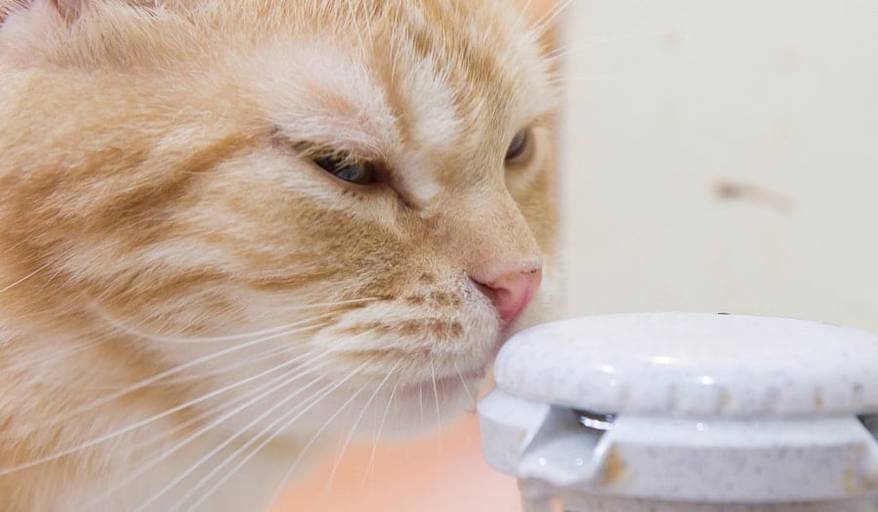
-
Find the right food for your petTake this quiz to see which food may be the best for your furry friend.Find the right food for your petTake this quiz to see which food may be the best for your furry friend.Featured products
 Adult Small & Mini Lamb Meal & Brown Rice Recipe Dog Food
Adult Small & Mini Lamb Meal & Brown Rice Recipe Dog FoodFor the faster metabolism of Small & Mini dogs
Shop Now Adult Chicken & Barley Recipe Dog Food
Adult Chicken & Barley Recipe Dog FoodSupports lean muscle and beautiful coat for adult dogs
Shop Now Puppy Lamb Meal & Brown Rice Recipe
Puppy Lamb Meal & Brown Rice RecipeVital nutrients to support 5 essential building blocks for lifelong health
Shop NowFeatured products Hill's Science Diet Adult Sensitive Stomach & Skin Chicken Recipe Dog Food
Hill's Science Diet Adult Sensitive Stomach & Skin Chicken Recipe Dog FoodHighly digestible recipe, gentle on stomachs. Nourishes skin & promotes a lustrous coat
Shop Now Adult Chicken & Barley Recipe Dog Food
Adult Chicken & Barley Recipe Dog FoodSupports lean muscle and beautiful coat for adult dogs
Shop Now Adult Indoor Chicken Recipe Cat Food
Adult Indoor Chicken Recipe Cat FoodSupports energy level and beautiful fur in indoor cats
Shop Now -
Dog
- Dog Tips & Articles
-
Health Category
- Weight
- Food & Environmental Sensitivities
- Urinary
- Digestive
- Joint
- Kidney
-
Life Stage
- Puppy Nutrition
- Adult Nutrition
- Senior Nutrition
Cat- Cat Tips & Articles
-
Health Category
- Weight
- Skin & Food Sensitivities
- Urinary
- Digestive
- Kidney
-
Life Stage
- Kitten Nutrition
- Adult Nutrition
Featured articles Virtual Vet Visits: What You Need to Know
Virtual Vet Visits: What You Need to KnowLearn the ins and outs of a televet appointment before you talk to a vet online.
Read More Pet Dental Health: What Happens During a Deep Teeth Cleaning?
Pet Dental Health: What Happens During a Deep Teeth Cleaning?Learn about veterinary dental care for your pet, including deep teeth cleaning procedures, which can help your dog or cat maintain proper dental health.
Read More My Pet Ate a Lizard — What Should I Do?
My Pet Ate a Lizard — What Should I Do?Learn what to do if your pet eats a lizard, including whether they can be toxic and symptoms to keep an eye on when they've swallowed one.
Read More -


As a pet parent, one of your jobs is to ensure that your cat drinks enough water to stay healthy. If you notice that your furry friend isn't making regular trips to her bowl, it's time to find out why your cat isn't drinking water.
To paraphrase a popular saying, you can lead a cat to water, but you can't make her drink (or do anything she doesn't want to, really). However, once you determine that she isn't sipping often enough, there are a few ways to get your cat to drink water.

How Much Water Is Enough?
In order to stay hydrated, your cat needs around-the-clock access to fresh drinking water. Keep her bowl clean and fill it regularly, especially if it's placed near her food dish, as she may drop a few food crumbs into her drinking bowl.
But how much water per day does she actually need? Not as much as you might think.
"Cats don't drink as much per kilogram of body weight as do dogs," explains the Committee on Nutritient Requirements of Dogs and Cats. Therefore, the amount of water your cat needs varies with the food she eats and her environment. The committee notes that cats usually drink about an ounce of water for every half ounce of dry food they eat. Wet food, on the other hand, provides your kitty with food and moisture at once and can help her stay hydrated.
Why Is My Cat Not Drinking Water?
To avoid the complications of dehydration and to know how to encourage your cat to drink more water, you first need to determine why your cat isn't drinking enough.
In the absence of serious medical issues, start with the basics. Is her water clear of food, hair, dust bunnies and other debris? Your fur baby requires and desires clean water, so wash her bowl and replace her water at least once a day, if not more.
It's worth noting that some cats simply don't like where their water dish is located, explains Dr. Debora Lichtenberg, VMD in Petful. She tried a few at-home "experiments" to see if changing up the placement of the bowl made a difference in whether or not her own cats drank water. In her case, moving it away from food bowls did the trick. Try this maneuver at home to see if your kitty is being finicky about her water bowl real estate.
The Physics of Kitty Sips
Keep in mind, too, that your feline friend isn't going to lap up a large quantity of water at one time. Unlike your happily slurping dog, the way your cat drinks has its own complex pattern, notes MIT News. Rather than scooping like a ladle, a cat's tongue barely brushes the surface of the water before drawing back up into her mouth. The rapid dipping action creates a tiny column of water that she snaps up by closing her mouth before gravity can make it drop back into the bowl. It's difficult to see this line of liquid without capturing it on high speed film since she can complete four of these tongue dips per second — all while keeping her chin dry!
So don't worry if your kitty isn't gulping down water like a champ and sloshing it all over the place. She has her own delicate way of doing things. Sometimes, cats even daintily dip their paw into the bowl and lick off the water. As long as she's drinking a few sips a day and getting moisture in her diet, she's good to go.
How Do I Know if My Cat Is Dehydrated?
When a cat doesn't consume enough water, she is at risk for dehydration. "Dehydration occurs when the normal body fluids, including water and electrolytes, fall below required needs," describes Petcha, causing problems in her energy, skin and organ function. A cat not drinking water isn't always the cause for dehydration, but often it's a fairly common reason or symptom of dehydration.


Tasty Tips
Causes
A cat can become dehydrated by not drinking enough water or urinating more than she's ingesting, or, in extreme situations, because of vomiting or blood loss. Kidney disease, heat stroke and diabetes can all be related to dehydration, says Preventive Vet. Your cat also has an increased risk if she is elderly or living with thyroid problems.
Symptoms
One easy way to identify dehydration in your cat is to check for loose skin, or "tenting." Plop your cat into your lap and gently lift up the skin on the back of her neck. In a hydrated kitty, the flap of skin will snap back into place. If it stays up in a fold or is slow to fall back, she likely needs more fluids.
Additional symptoms to watch out for include weakness, loss of appetite, panting, drooling, elevated heart rate, weak pulse, dry or sticky gums, trembling, excessive urination or infrequent urination. Contact your veterinarian right away if your cat shows any of these signs. Just like a human chugging a sports drink after running around a soccer field, Petcha notes that a cat with these signs may be missing critical electrolytes such as sodium.

How Do I Get My Cat to Drink More Water?
Is your cat not drinking water, even after ruling out medical concerns and other issues? You may have to dig into your bag of cat tricks. There are a few ways to get your cat to drink water.
If you haven't already noticed in your tenure as a pet parent, cats can be very particular about things. If your cat won't drink out of a water bowl, try a water fountain that offers her the benefit of continually fresh water and the bonus of splashing it around. A cat fountain also saves water (and money on your water bill) because you don't have to leave your bathroom faucet running. Some cats also don't like the idea of still water. It goes back to their ancestral instincts that running water is safer to drink.
Changing up your kitty's environment may urge her to drink more water, suggests Animal Planet. One way to do this is to offer your cat multiple drinking stations: place water dishes around the house, including in places that will be new and might make her curious. A variety of bowl materials like ceramic, metal and glass may also encourage her to taste-test and investigate.
As mentioned earlier, eating wet food will help to hydrate your cat. According to Boston Street Animal Hospital, dry food is only about 10 percent water, but wet food can be up to 70 percent liquid. Consider Hill's® Science Diet® varieties that might suit her flavor preferences. If your cat doesn't care for canned food, you can add water to dry kibble or combine wet and dry food in the same dish.
By providing your cat with the essentials of proper nutrition and fresh, clean drinking water, you can help her have the juice to spring and pounce another day.


Christine O'Brien is a writer, mom, and long-time cat parent whose two Russian Blues rule the house. Her work also appears in Care.com, What to Expect, and Fit Pregnancy, where she writes about pets, pregnancy, and family life. Find and follow her on Instagram and Twitter @brovelliobrien.
Related products

Supports energy level and beautiful fur in indoor cats

Highly digestible recipe, gentle on stomachs. Nourishes skin & promotes a lustrous coat

Vital nutrients to support 5 essential building blocks for lifelong health

Supports lean muscle and beautiful coat for adult dogs
Related articles

What is the best food for an overweight cat? Learn all about weight control food for cats, including what's in it and how it works.

How do you get a cat to lose weight? Learn all about cat foods for weight loss, including how to choose weight control cat food and exercise tips.

What is the best food for an overweight cat? Learn all about weight control food for cats, including what's in it and how it works.

Discover how to identify cat sensitive skin and what you can do to help your cat thrive from head to paw.

Put your cat on a diet without them knowing
Our low calorie formula helps you control your cat's weight. It's packed with high-quality protein for building lean muscles, and made with purposeful ingredients for a flavorful, nutritious meal. Clinically proven antioxidants, Vitamin C+E, help promote a healthy immune system.
Put your cat on a diet without them knowing
Our low calorie formula helps you control your cat's weight. It's packed with high-quality protein for building lean muscles, and made with purposeful ingredients for a flavorful, nutritious meal. Clinically proven antioxidants, Vitamin C+E, help promote a healthy immune system.

